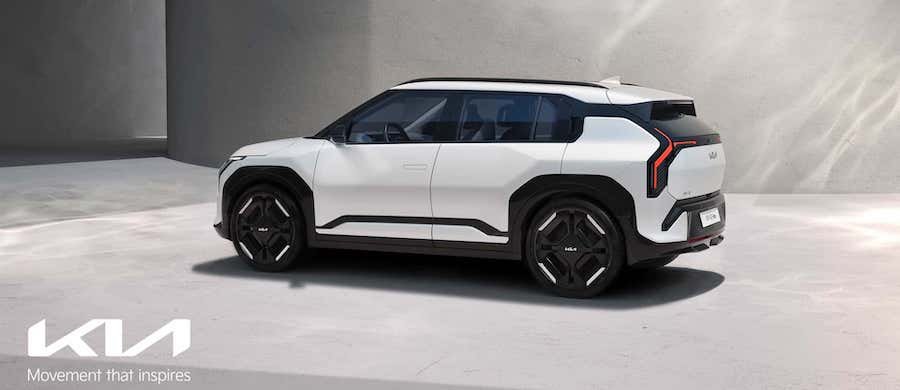The Affordable Kia EV3's Tech Is A Much Bigger Deal Than You Think

Usually, when you take a more expensive car or platform and add a smaller and more affordable version, it means losing things. Cutting back on features and technology or, in the case of electric vehicles, battery size and range. That really doesn't seem to be the case with the upcoming Kia EV3. If anything, it's the opposite; the compact and more budget-friendly EV seems to represent a significant evolution for the Hyundai Motor Group's electric platform.
Kia just held an event in Korea called the EV3 Tech Day, and the news unveiled there proves that this car won't be just some de-contented penalty box full of compromises to get the price down. Far from it.
Some of this we knew about when the car was unveiled a few months ago; other features are coming into focus now, and they surpass what we've seen from the EV6, EV9, Hyundai Ioniq 5 and others.
Much of this information was rounded up by Korea's Chosun Daily; YouTuber The Ioniq Guy (you can guess what he's into); and The Korean Car Blog.
It's unclear which, if any, features and upgrades will make it to U.S. market cars as well as to other Hyundai, Kia and Genesis EVs. But considering it uses the same E-GMP platform as those other cars and more improved models are coming, I'd say many of these changes are a safe bet to see elsewhere.
Let's dig in.
Some Big I-Pedal Changes
If you've ever driven a modern EV from the Korean brands, then you know that you can adjust the level of regenerative braking you experience from nothing to full one-pedal driving (called i-Pedal) to several levels in between. You do this with a set of paddles on the steering wheel. I'm a fan because it's so customizable even under different driving conditions.
The EV3 adds i-Pedal 3.0 one-pedal driving in all regenerative braking stages, not just the strongest one like previous cars. Interestingly, it also works in reverse now; this has never happened to me, but apparently the difference in pedal feel and acceleration threw some people off when they needed to parallel park or something. Makes sense.
More advanced regenerative braking is now baked into the semi-autonomous driving assistance systems as well, via the navigation system. Previously, the cars might adjust that based on speed camera information alone, but now it's a more cohesive approach to maximize efficiency.
And yes, the EV3 now has a memory function to better store your settings when you restart the vehicle. That's great news.
A Bigger, More Serious Battery
My EV6 has a 77.4 kWh. In all-wheel-drive form like my car, it's good for 282 EPA-rated miles of range. Not bad for a dual-motor car, I think. But I may have some battery envy now; the EV3 maxes out with a next-generation 81.4 kWh battery pack, same as the midsize crossovers like the updated Ioniq 5. Again, for a "smaller" EV, you'd usually expect some downsized battery pack (and indeed, the EV3 will offer a base 58.3 kWh one too.) But not so here.
It's also quite improved, per the Chosun Daily:
Kia equipped the EV3 with an 81.4-kilowatt-hour Gen 4 battery, the largest in its class (400 volts). This battery enhances energy density at the cell level, resulting in the EV3 having approximately 22% higher energy density than the Niro EV. Kia explained that the electronics inside the battery pack are mounted in two tiers, adding 25% more battery cells than the Niro EV.
As that story notes, and as we knew, the EV3 does make some sacrifices in the form of a 400-volt EV architecture, not an 800-volt one like its bigger brothers. That will mean the EV3 sacrifices some fast-charging speeds common to other Hyundai and Kia models. The EV3 is limited to 128 kW of charging power, enough for a 10 to 80% charging time of 31 minutes. However, it still offers vehicle-to-load (V2L) functionality, so it can charge other devices or even your home with an adapter plug.
A 'Thin' HVAC System
Now, I know this isn't the sexiest thing you're going to read on InsideEVs today. But this is an important first for Kia: a heating, ventilation and air conditioning (HVAC) system that's 33% smaller than previous models, which reduces complexity and manufacturing costs while boosting efficiency. (That's been going around lately.) It has 44% fewer components overall, too.
By downsizing this system, Kia frees up more energy for propulsion and range and less for heating and cooling. Kia's EVs already come with a heat pump, so this seems like a further evolution of something the company was already good at. Oh, and it lets the EV3 activate the high-voltage main battery for a kind of "accessory mode" like you'd have on a gas car, powering heating and cooling and inside V2L functions without having to go into full drive-ready mode.
In short, the EV3 sounds remarkably impressive for an "affordable" car. Prices aren't out yet for the U.S. market, but we're predicting a starting price around $33,000 to $36,000, before any tax credits. If that holds true, you should be getting a lot for your money.
